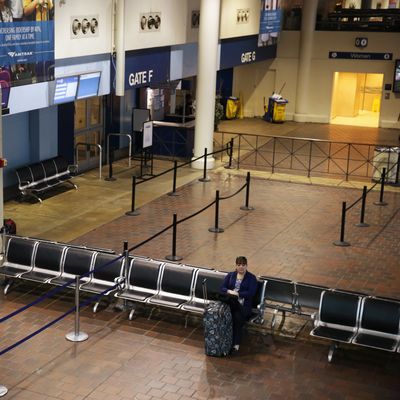
After every high-profile air or rail accident, the question inevitably gets asked: “How safe is this mode of transportation?” Seeing a routine activity that millions of Americans do every day turn deadly is bound to make people apprehensive. However, riders are always quickly assured that planes and trains are far safer than automobiles, and that swearing them all off for pedestrianism has its flaws statistically speaking too.
Immediately after a crash, though, data isn’t always terribly comforting, and sometimes people decide to get where they need to go by other means. On Amtrak this morning, only hours after a crash that left at least seven people dead, many of the train routes still running were filled with plenty of empty seats.
Train travel is incredibly safe, however, an argument proven by the rail-safety explainers that appear after every crash. There is an entire genre of online writing devoted to reminding readers how rare each of the tragedies involving otherwise mundane activities happens to be. Google will happily tell you that planes, treadmills, trampolines, cruises, roller coasters, bikes, and skydiving are all relatively safe, regardless of whatever bad news they might have attracted. The same is true of trains. After one person died in an Amtrak crash in 2004, Slate concluded, “Despite all the grisly sounding data, the bottom line is that traveling by either rail or air is extremely safe and getting safer all the time.” After a few crashes in Europe in 2013, CityLab wrote, “Really, It Is Extremely Unlikely That You Will Die in a Train Crash.” In 2007, the New York Times estimated that your lifetime risk of dying in a train crash was 1 in 156,169.
Years pass between the periodic reassurances, which in its own way explains how safe train travel is. After yesterday’s terrible crash, the argument for train travel remains much the same — even if the shock and tragedy of the deaths and the debris make it hard to fully believe it. As Wonkblog pointed out this morning, if you “chart only fatalities from [Amtrak] derailments, last night’s accident killed as many people as have been killed by derailments in the past 15 years.” When fatalities do happen, they often involve cars in railroad crossings or people crossing tracks — not passengers, like the Amtrak accident in New Orleans on Sunday. Amtrak has seen its number of annual accidents drop in the past few years — although the trains have also been getting less timely, which offers a far more reasonable thing to worry about when it comes to Amtrak. “Are Trains Safe?” is an easy question to answer: Yes. “Are Trains More Timely Than Other Modes of Transportation?” is a far more tangly one.





























